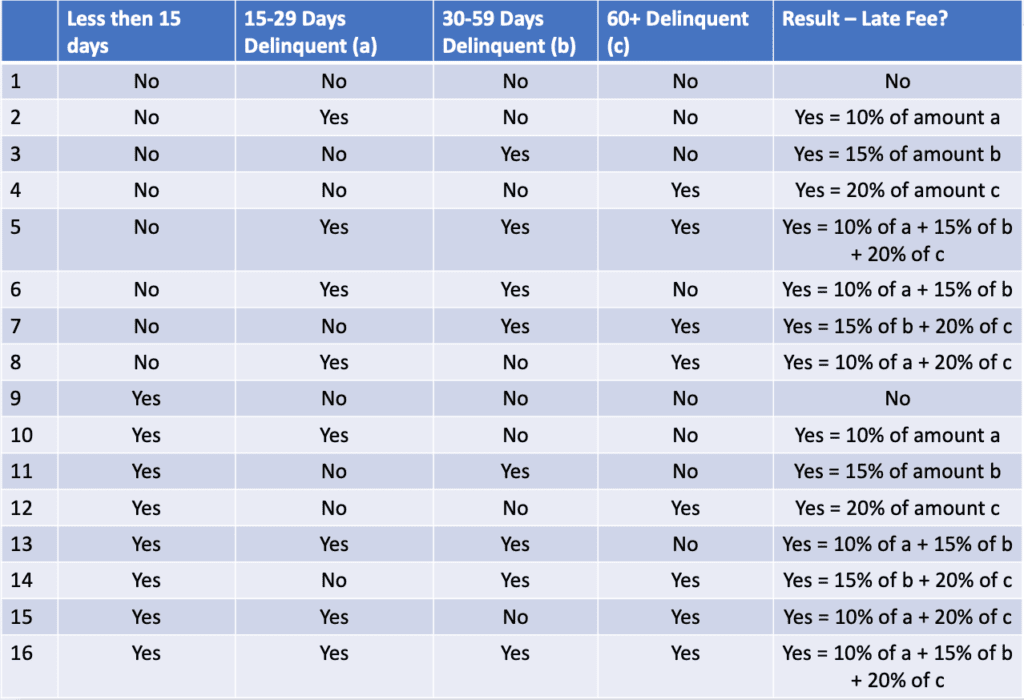Examples & Practice of Decision Tables Copy
Let’s look at some more examples!
EXAMPLE 1
Maybe your requirement looks like this:
Our pricing and rates for loans are based on Customer Tiers. The rules for Customer Tiers are as follows:
- Tier 1= Loyal 10yrs, Mortgage with us, and 100K in assets with us
- Tier 2 = Mortgage with us and 10yrs loyal
- Tier 3 = Loyal 10yrs, and 100k in assets with us
- Tier 4 = Loyal 10yrs
- Tier 5 = 100k in assets with us
- Tier 6 = All Others
How do we make this into a Decision Table to drive ALL of the scenarios? (Warning, answer below….try it before scrolling down!)
First, identify the actual decision this rule/logic set is trying to make.
Second, what are the conditions that are evaluated to make the decision?
Third, populate the combinations, and then the results.
<<< WARNING – ANSWER BELOW – DID YOU TRY THIS BEFORE SCROLLING? >>>
Okay, here is an example of what this might look like. It illustrates out all 8 scenarios. Did you find 3 conditions and 8 scenarios?

Okay, are you ready for another one?
EXAMPLE 2
Maybe your requirement looks something like this:
- If an account is overdue more than 15 days, then the customer pays a late fee.
- Late fees rules:
- 10% of it is 15 days or more
- 15% for amounts delinquent more than 30 days
- 20% for amounts delinquent more than 60 days
How do we make this into a Decision Table to drive ALL of the scenarios? (Warning, answer below….try it before scrolling down!)
First, identify the actual decision this rule/logic set is trying to make.
Second, what are the conditions that are evaluated to make the decision?
Third, populate the combinations, and then the results.
<<< WARNING – ANSWER BELOW – DID YOU TRY THIS BEFORE SCROLLING? >>>
Okay, here is an example of what this might look like. It illustrates all 16 scenarios. Did you find 4 conditions and 16 scenarios?

And, it helps to add a scenario as well. Something like this:
Scenario A: A customer has an outstanding balance of $100. $50 is the recent invoice and less than 15 days, $20 is 29 days overdue, and $30 is 59 days overdue. This fits line 13 of the decision table and the late fee would be: $6.50. This is 10% of $20 plus 15% of $30.
KEY LEARNINGS:
- Both examples have bullet point logic to start, they seem quite clear, but when using a decision table, there were far more scenarios identified. This makes the requirement more clear for the developers and testing/QA team. Without this clarity, the “missing” scenarios may not be programmed or tested. Or worse yet, they are programmed or tested but with the incorrect result.
- The more conditions you have, the more scenarios you get, EXPONENTIALLY!
- The data/nouns in your conditions must be defined VERY well.
- For example: What does “loyal” mean? How is it calculated? Maybe that is another decision table?
- For example: How are the delinquent days calculated exactly? From what date/time to what date/time?
